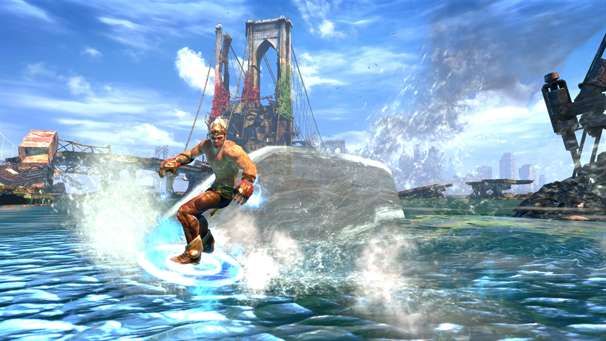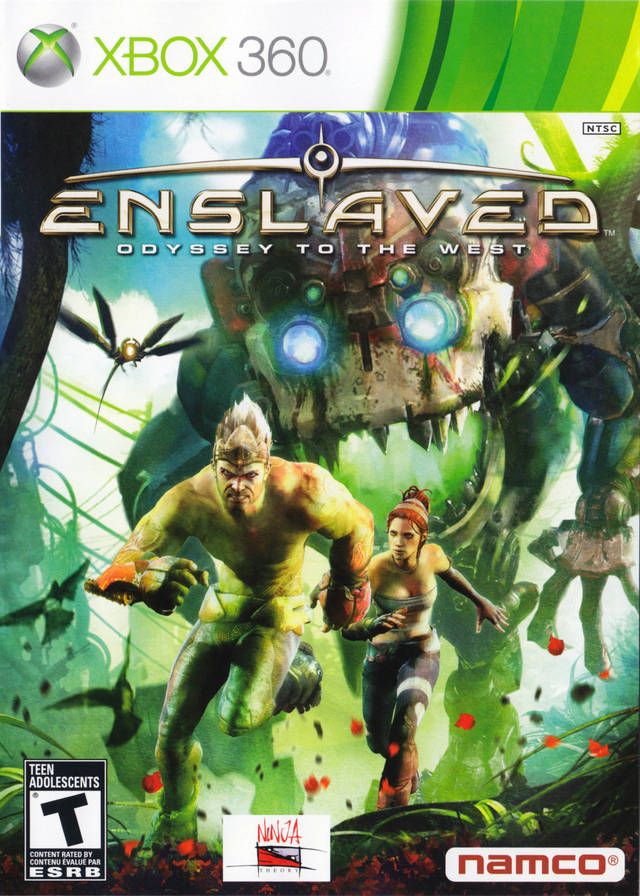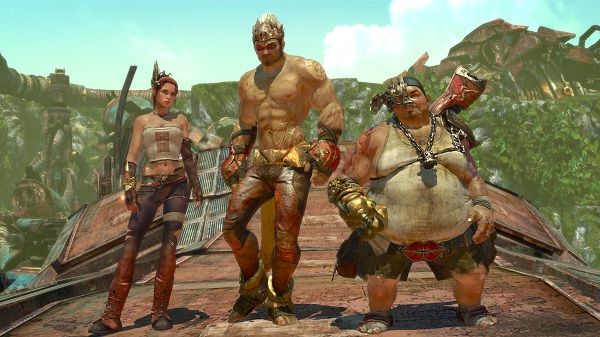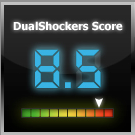Back in 2007, during the first year of the PlayStation 3 era there was one title that stood out from the pack. It was made by a mostly unknown developer from Cambridge England, known as Ninja Theory and their game was Heavenly Sword. While many people complained about the length of the title, you couldn’t argue the fact that it was a great piece of storytelling and a cinematic gem, which very early on showcased what this generation of video games was going to be about.
In 2010, Ninja Theory is back with Enslaved: Odyssey to the West, and they brought with them the high level, quality storytelling that made them who they are today. I had very high hopes for this one, especially when considering how much we’ve seen of the title as it was developing. Three years after the release of Heavenly Sword, was Ninja Theory able to make lightning strike twice ? You’ll just have to read on to find out.
Enslaved takes place in a future where most of the world’s population has been decimated from a great war. Humanity is surviving in little pockets of resistance and self-sustaining communities, while mechs (robots) are on constant patrol looking for any humans that aren’t already enslaved. The game opens up with our two main characters on board of a crashing slave ship.
At first you think that the title is taking place in some kind of world created by the developer, but that is only until the ship breaks the arm of the Statue of Liberty. Only then do you realize that you’re on a collision course for New York City. But remember, because of the great war (see above) the concrete jungle that is NYC, is much more jungle than concrete these days. Traversing that land with all the climbing and jumping would take a man of great skill. A monkey man.
That's right. You play as Monkey. He's a big, strong, and incredibly agile man, who along the way you come to find out has no real friends or family. Growing up as an orphan, he raised himself in the wild wasteland that is his world. While trying to get off the crashing slave ship, Monkey realizes that there’s another passenger on board who is also fleeing. She makes it into an escape pod as does Monkey, except he is on the outside of it and holding on for dear life as the two come crashing down to the earth below.
After the crash, Monkey regains consciousness and has a serious headache. A headache that does not stem from what just happened, but because he is now wearing a helmet that he cannot take off. Trip, the girl from the slave ship, explains that she has placed the helmet on him and that he will help her whether he wants to or not. She needs to get home and needs Monkey’s help to get her there. The two are now bound together. So much so that if Trip dies, so does Monkey and vice versa.
It’s an interesting dynamic and it translates well into the gameplay. Monkey is the muscle and Trip is the brains of the operation. Both have their own strengths, and mastering how to use them in the right situation will determine how successful and efficient you are. We’ve seen co-op gameplay dozens of times this generation, but I feel that this is one game where, because of the relentless AI mechs (whom apparently are all marksmen), lack of proper teamwork will lead to failure. You simply won’t survive.
Before you make a stink face to why this game doesn’t have a two-player co-op component, let me put that to rest right away. Even though you spend 75 percent of the game monkeying around (pun intended) with Trip, the constant interaction between the two is what truly keeps you engaged. As you make your way through the game’s story and experience what they experience, this is where you connect to both of the characters. That same connection simply would not be possible if you were playing with a buddy online, and I think – no scratch that - I know that’s why the game wasn’t designed that way.
Just like other co-op titles out there, you can yell out instructions and orders to Trip. You can make her advance in position, act as a decoy, heal you, and upgrade your gear and attributes. Upgrades are awarded from collecting tech orbs. You’ll find said orbs scattered across the games levels as well downed mechs after you kick their robotic rear ends. When referring to gear, this means upgrading Monkey’s do-it-all staff and trusted shield. I say do-it-all because not only can you use the staff to get all savage caveman-like on the mechs, it can also be used as a shoulder cannon of sorts that will allow you to shoot exploding projectiles but also electrical ones to stun your enemies. Trust me when I say that you will want to make your staff a priority when upgrading your gear. It may just save your life in the tough segments later on in the game.
Speaking of hitting mechs with long staffs, the combat in Enslaved, while not the most inspired, manages to stay fun throughout. After putting a good enough beatings on enemies, you’re given the option of performing a take down – where with one press of the 'B' button (circle button on PS3), you put together a slow motion butt-kicking sequence that would make both Kratos and action-movie Director, John Woo proud. After a couple of hours in, these animations can start to feel a bit dated, but by then (if you take my staff upgrading advice above) you should be powerful enough to avoid any lengthy conflicts.
Visually, Enslaved looks as good as any game should 5 years into the current generation of consoles. It uses the Unreal Engine and like more recent titles using the same tech, it has manages to steer clear of using the same dull color palette that the engine is known for. In fact, the use of color in Enslaved is quite impressive and the first two-thirds of the game is very pleasing on the eyes.
One of the biggest issues that I found during my playthrough was the voice syncing with what was being said on screen. Normally, this wouldn’t affect most titles, but because this game is all about story and presentation, it can be a bit annoying. Additionally, because it’s noticeable, it does take away from the overall experience. I played the Xbox 360 version for my review, but some reports indicate the issue is more severe on the PS3; so severe that it will be (or by the time of this review has been read) addressed by a downloadable patch.
Another thing that was quite annoying were the load times. I can understand some load time in between chapters, but loading after dying was getting pretty annoying, especially in the more challenging parts of the game. It’s not that the loading was unbearably long; it was that when you’re putting together this cinematic experience for the player, extended load times take away from the very experience you’re trying to create. I didn’t install the game to my hard drive for this review, so with that said, results may vary.
With plenty of tech orbs to collect, hidden masks to find, and a great narrative to watch, Enslaved’s replay value is actually pretty decent for a single-player game. Ninja Theory has once again created a world that you will be completely lost in for the 8-10 hours that it lasts, and at the same time they've managed to prove that they’re no one trick pony either. While certainly not perfect, Enslaved will without a doubt appeal to all types of gamers as it is the right blend of action, drama, suspense, pacing and gameplay that make it a winner. The demo doesn’t do this game justice; you need to experience the whole thing for yourself.
- Title: Enslaved: Odyssey to the West
- Platform Reviewed: Xbox 360
- Developer: Ninja Theory
- Publisher: Namco Bandai
- MSRP: $59.99
- Release Date: Available Now
- Review Copy Info: A copy of this game was provided to DualShockers Inc, by the publisher for purposes of this review
Enslaved: Odyssey to the West
- Platform(s)
- PS3, Xbox 360, PC
- Developer(s)
- Ninja Theory
- Publisher(s)
- Namco Bandai
- Genre(s)
- Action, Adventure




